Many aspiring dog owners dream of a furry companion but dread the constant battle against shedding hair. For those with allergies, a pristine home, or simply a preference for less clean-up, finding a dog that doesn’t shed can be a game-changer. While no dog is truly 100% “non-shedding” (they all lose some hair, just like humans), many breeds shed so minimally that they are often referred to as non-shedding or hypoallergenic. If you’re searching for the smallest dog breed that doesn’t shed, you’re in luck! This comprehensive guide explores some of the most charming and compact breeds that offer big personalities without the big mess, helping you discover the best dog to have that doesn’t shed for your lifestyle.
Affenpinscher
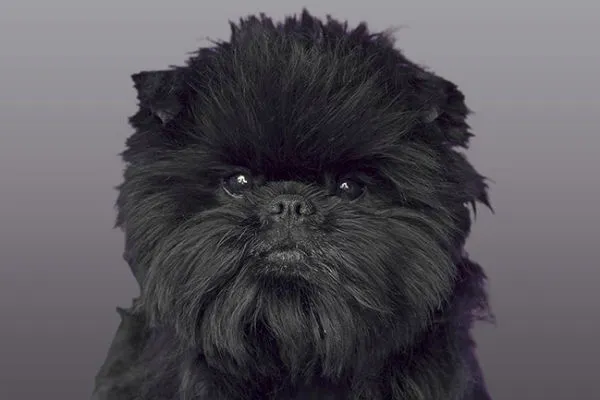 A charming Affenpinscher with wiry black fur and an alert expression
A charming Affenpinscher with wiry black fur and an alert expression
The Affenpinscher, whose name translates to “monkey-like terrier,” perfectly embodies its moniker with its intelligent, curious, and somewhat mischievous personality. Despite their small stature, these Toy Group members are remarkably fearless and make excellent watchdogs, always alert to new arrivals. What’s even better for those concerned about shedding is their wiry coat, which sheds very minimally and is notably low on “doggy odor.” This makes them a fantastic choice for tidy households. Regular grooming, typically a twice-weekly brushing with a slicker brush and comb, is sufficient to keep their shaggy-yet-neat appearance in top shape. Affenpinschers are known for their sense of humor and thrive on companionship, making them a joyful addition to many homes.
Basenji
 A sleek Basenji with short red and white fur standing elegantly
A sleek Basenji with short red and white fur standing elegantly
Often called the “barkless dog,” the Basenji is an intriguing choice for those who appreciate hounds but wish to avoid their characteristic shedding and scent. These unique dogs shed very little, thanks to their short, fine coat, which is also incredibly easy to maintain with just an occasional brushing. Basenjis are known for their fastidious grooming habits, often cleaning themselves much like cats. Their quiet nature makes them surprisingly suitable for apartment living, provided they receive ample daily exercise and mental stimulation. Active owners who can provide consistent training and plenty of outdoor adventures will find a loyal and independent companion in the Basenji.
Bichon Frise
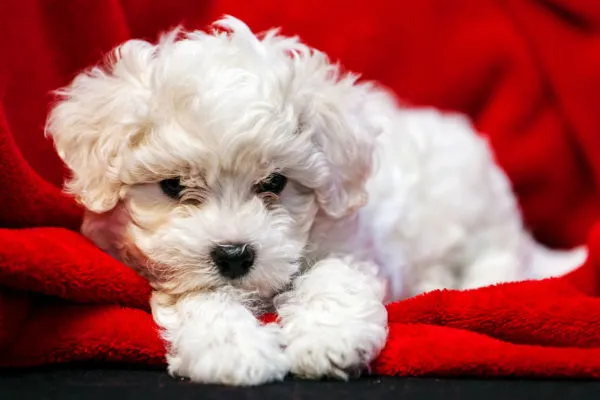 A fluffy white Bichon Frise with its signature powder-puff coat
A fluffy white Bichon Frise with its signature powder-puff coat
The Bichon Frise is the quintessential smallest dog breed that doesn’t shed and is often recommended for individuals with allergies. These playful, affectionate, and cheerful dogs possess a continuous-growing coat of hair, rather than fur, which is why they don’t “shed” in the traditional sense. However, this non-shedding quality doesn’t mean they are maintenance-free. Their soft, curly, powder-puff coat requires consistent grooming to prevent mats and tangles. This includes daily brushing, regular professional grooming every 4-6 weeks, and occasional baths. With proper care, the Bichon Frise remains a delightful, low-allergen companion, known for their charming personalities and boundless love for their families. Many of these breeds are ideal small lap dogs that don’t shed.
Bolognese
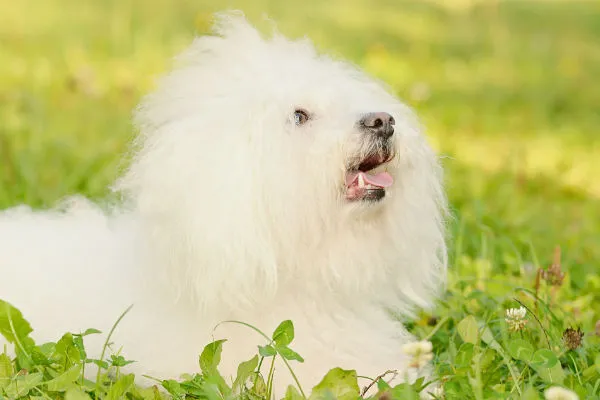 A sweet Bolognese with long, soft white fur looking calmly
A sweet Bolognese with long, soft white fur looking calmly
Similar to the Bichon Frise, the Bolognese boasts a distinctive fluffy coat composed of hair, not fur, which means they do not shed. This charming Italian breed is known for its serene and devoted nature, making them wonderful lap dogs and companions. While they don’t shed, their beautiful white coats do require dedication to grooming. Daily brushing is essential to remove any dead hair and prevent matting, ensuring they always look their best. The Bolognese thrives on human companionship and is generally happy to spend their days close to their owners, adapting well to various living situations as long as they receive love and attention.
Brussels Griffon
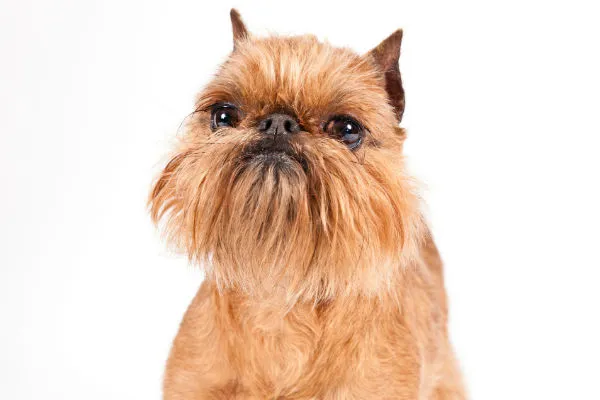 A rough-coated Brussels Griffon with a distinctive bearded face
A rough-coated Brussels Griffon with a distinctive bearded face
Despite their diminutive size, Brussels Griffons are sturdy dogs that require less pampering than their appearance might suggest. Available in both smooth-coated and rough-coated varieties, both types are minimal shedders. The rough-coated Griffons shed even less, making them a preferred choice for those seeking a smallest dog breed that doesn’t shed. Regular grooming helps maintain their coats, whether it’s brushing for the smooth variety or hand-stripping for the rough-coated type. Their small stature means that a daily walk and indoor playtime typically satisfy their exercise needs. Brussels Griffons are fiercely loyal and thrive in homes where their human companions are frequently present, offering a unique blend of sensitivity and comical charm.
Chinese Crested
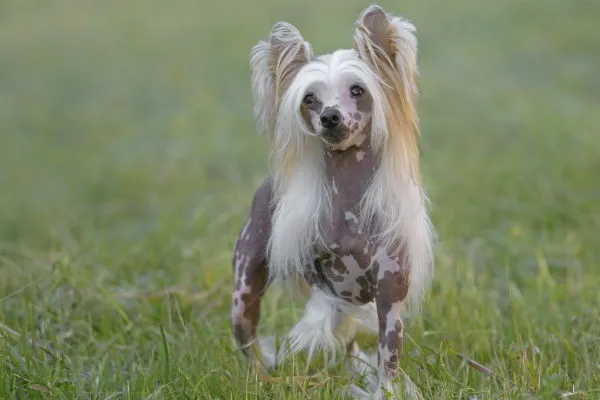 A hairless Chinese Crested dog showing its unique skin and sparse fur
A hairless Chinese Crested dog showing its unique skin and sparse fur
For those looking to entirely avoid dog hair, the Chinese Crested offers a unique solution. This breed comes in two distinct varieties: hairless and powderpuff. The hairless type, as its name suggests, has very little fur, typically only on its head, tail, and paws, making it virtually shed-free. The powderpuff variety is covered in a soft, fine double coat that, while full, sheds very minimally. Hairless Chinese Crested dogs require special skin care, including protection from sun exposure and cold temperatures, and are more prone to skin irritations. Both varieties are affectionate, playful, and thrive on human interaction, proving to be shed-free family dogs for the right owners.
Coton de Tulear
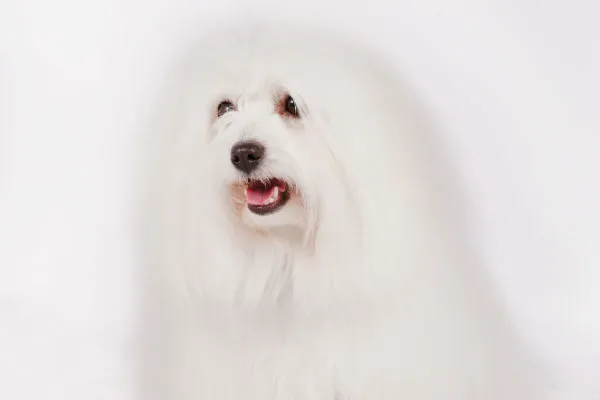 A Coton de Tulear with long, soft white cotton-like fur
A Coton de Tulear with long, soft white cotton-like fur
The Coton de Tulear, known for its distinctive long, soft, cotton-like coat, is celebrated as a hypoallergenic breed, making it an excellent option for allergy sufferers and those who want a smallest dog breed that doesn’t shed. Their endearing, lighthearted, and gentle nature makes them wonderful companions. While their coat is beautiful and low-shedding, it does require dedicated daily grooming to prevent matting and keep it pristine. This effort is well worth it for their charming personalities and ability to bring joy to any household. Cotons are adaptable and love being part of family activities, whether it’s a gentle stroll or cuddling on the couch.
Havanese
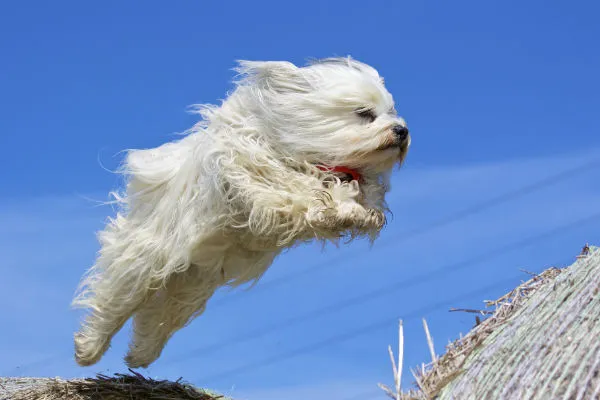 A playful Havanese with long, flowing brown and white fur
A playful Havanese with long, flowing brown and white fur
The national dog of Cuba, the Havanese, offers owners a delightful combination of spunky charm and a non-shedding coat. Their flowing, silky hair means less time spent lint-rolling furniture and more time enjoying playful antics with these vivacious companions. Like many non-shedding breeds, their coat requires regular attention, including weekly brushing and routine baths, to keep it clean, healthy, and tangle-free. Havanese are intelligent, easily trained, and possess an outgoing personality that makes them excellent companions for families, singles, and seniors alike. They are also surprisingly athletic non-shedding dogs for their size, enjoying walks and games.
Maltese
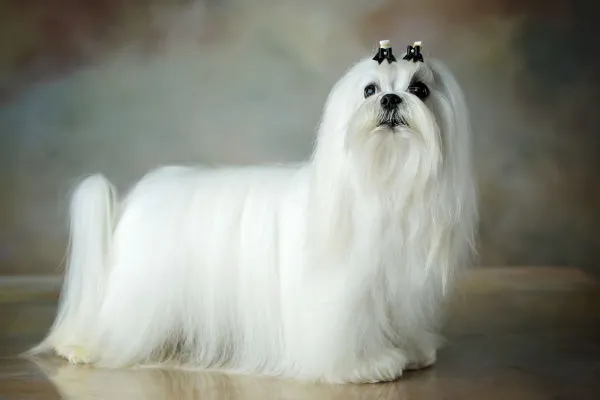 A pristine Maltese with long, silky white hair and a gentle expression
A pristine Maltese with long, silky white hair and a gentle expression
Maltese dogs have captivated hearts for three millennia, originating from the island of Malta. This ancient breed has maintained its allure, partly due to its long, white, silky coat that sheds very little, making them ideal lap dogs. Their luxurious coats do demand regular grooming to prevent mats from forming; daily brushing is often recommended. Occasional baths help keep their pristine white hair clean and bright. Maltese are gentle, affectionate, and intelligent, thriving on human companionship. They are known for their graceful demeanor and playful spirit, making them a wonderful choice for those seeking a beautiful, low-shedding companion.
Lhasa Apso
 A majestic Lhasa Apso with long, flowing golden fur covering its eyes
A majestic Lhasa Apso with long, flowing golden fur covering its eyes
Hailing from the high altitudes of Tibet, the Lhasa Apso is a small dog breed prized for its role as a companion and sentinel. Calm yet playful, these dogs enjoy both brisk walks and restful moments on their owner’s lap. Lhasa Apsos are renowned for their non-shedding coats, which are long, dense, and provide protection from harsh climates. While they don’t shed, their magnificent coats require significant maintenance. Many owners opt for a “puppy cut” to simplify daily grooming and brushing. Their independent yet devoted nature makes them excellent, albeit sometimes challenging, companions, perfect for someone who appreciates their regal bearing and protective instincts.
Miniature Schnauzer
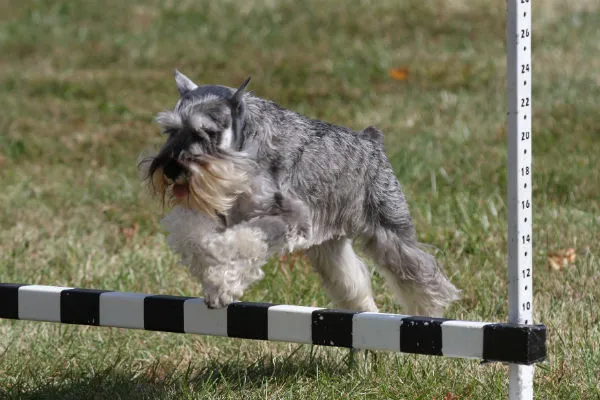 An alert Miniature Schnauzer with its characteristic salt-and-pepper wiry coat
An alert Miniature Schnauzer with its characteristic salt-and-pepper wiry coat
The Miniature Schnauzer is a smart, trainable, and cheerful terrier that closely resembles its larger Standard Schnauzer cousin. This breed sheds very little, making them a popular choice among those seeking a smallest dog breed that doesn’t shed. Their adaptability allows them to thrive in various environments, from city apartments to country homes, as long as they are close to their human families. To maintain their distinctive appearance and wiry coat, weekly brushing and regular professional grooming are essential. Miniature Schnauzers are robust, lively, and intelligent, making them excellent companions for active individuals or families who can provide consistent training and engagement. Interestingly, while not a “Shepherd” breed, their terrier characteristics mean they are alert and protective, which is a trait shared by many working dogs, even some dog breeds with shepherd in the name.
Poodle (Miniature & Toy)
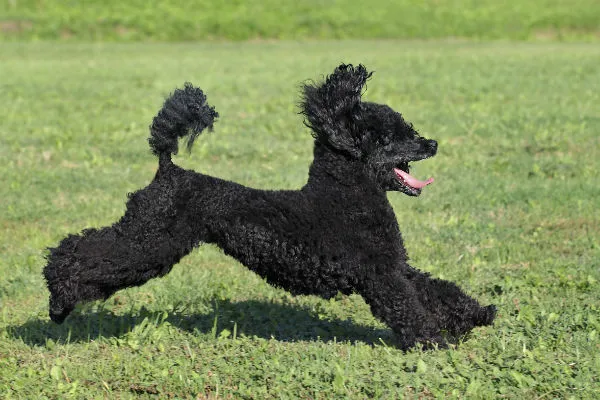 A proud Poodle with elegantly styled, curly white fur
A proud Poodle with elegantly styled, curly white fur
When the topic of non-shedding dogs arises, Poodles are often the first breed that comes to mind, and for good reason. Miniature and Toy Poodles offer the same highly desirable non-shedding and hypoallergenic qualities as their Standard counterparts, simply in a more petite package. All Poodles are celebrated for their exceptional intelligence, making them highly trainable and versatile. They are active, proud, and require regular exercise to stay happy and healthy. Their dense, curly coat, while non-shedding, does demand consistent professional grooming every 4-6 weeks, along with regular brushing at home, to prevent matting and maintain their iconic appearance.
Scottish Terrier
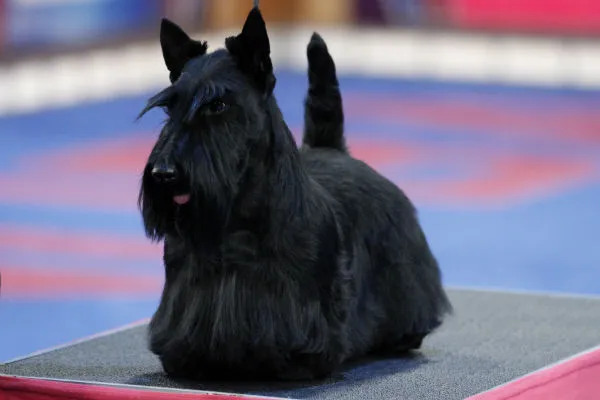 A distinct Scottish Terrier with a wiry black coat and a confident stance
A distinct Scottish Terrier with a wiry black coat and a confident stance
The Scottish Terrier, affectionately known as a Scottie, is a terrier breed renowned for its boldness, confidence, and surprisingly big personality for its size. Their wiry, weather-resistant outer coat and soft undercoat shed very little, making them an excellent choice for minimal shedding. However, this coat does require regular brushing, professional grooming, and occasional hand-stripping to keep it healthy and maintain the breed’s distinctive silhouette. Scotties are clever and independent dogs with strong prey drives, which means they need consistent training and careful supervision around smaller animals. For an owner who appreciates a tenacious, loyal, and somewhat stubborn companion, the Scottie is an enduring favorite among the smallest dog breed that doesn’t shed.
Shih Tzu
 A charming Shih Tzu with long, luxurious brown and white fur
A charming Shih Tzu with long, luxurious brown and white fur
The Shih Tzu is another breed with a long and regal history, once favored pets of the Tang Dynasty in China, earning them the moniker “little lion dogs.” These sturdy yet lively Toy Group members come in a variety of colors and patterns. Their long, silky hair is very low-shedding and looks exceptionally majestic when properly brushed and cared for, befitting their royal ancestry. With their proudly held heads and curling tails, their carriage is often described as arrogant, yet their gentle and trusting nature makes them exceptional companions. Shih Tzus were specifically bred to be house pets, thriving on interaction and affection. Daily brushing is key to keeping their beautiful coats tangle-free.
West Highland White Terrier
![]() A cheerful West Highland White Terrier with its iconic white, coarse coat
A cheerful West Highland White Terrier with its iconic white, coarse coat
The West Highland White Terrier, fondly called a Westie, boasts a coarse, double white coat that sheds very little, making them a popular smallest dog breed that doesn’t shed. These sturdy little dogs are intelligent, loyal, happy, and incredibly entertaining companions. They possess a curious nature, moderate energy levels, and an independent streak that is common among all Terriers, which can sometimes make training a fun challenge. Regular brushing and professional grooming, including hand-stripping, are important to maintain their distinctive coat and overall health. Westies are robust dogs who enjoy outdoor adventures but are equally content snuggling indoors with their families.
Xoloitzcuintli
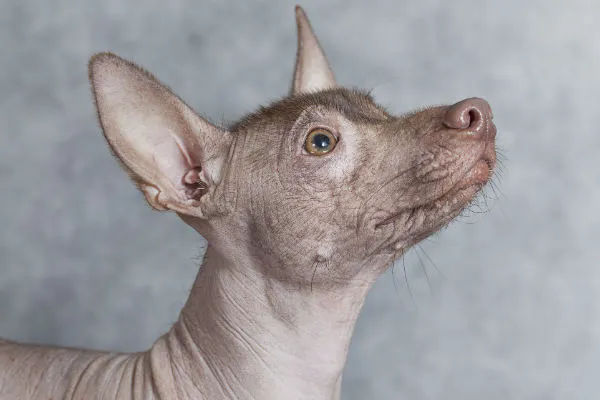 A unique hairless Xoloitzcuintli, showcasing its smooth, dark skin
A unique hairless Xoloitzcuintli, showcasing its smooth, dark skin
Also known as the Mexican Hairless, the Xoloitzcuintli is an ancient and rare breed of dog, available in both hairless and coated varieties. The hairless Xolo, with only a small tuft of hair on its head, is virtually shed-free. The coated variety has a very short, fine coat that sheds minimally. As with other hairless breeds, the Xolo requires extra attention to its skin, needing protection from the sun, cold, and potential irritations. Xolos are known for being attentive watchdogs and affectionate companions. While they enjoy physical activities and vigorous play, they are also celebrated for their tranquil and calm personality around the home, making them versatile pets.
Yorkshire Terrier
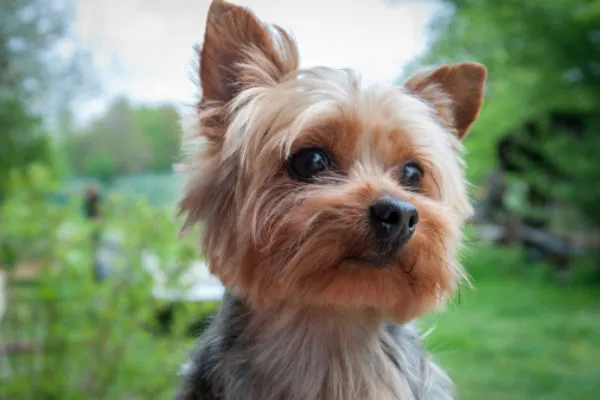 A lively Yorkshire Terrier with its classic long, silky blue and tan coat
A lively Yorkshire Terrier with its classic long, silky blue and tan coat
Sprightly, tenacious, and incredibly affectionate, the Yorkshire Terrier, or Yorkie, is a Toy breed brimming with personality. These spunky lap dogs are consistently ranked among the most popular breeds, and for good reason. Yorkshire Terriers do not shed, and their long, silky coats are stunning when brushed out daily – a task made easy by their small size. Don’t be fooled by their regal appearance; Yorkies have working-class roots, originally bred to hunt rats in English clothing mills. Today, they are just as happy to sit on their owner’s lap as they are to chase down a toy, offering boundless energy and loyalty in a compact, non-shedding package.
Understanding Non-Shedding and Hypoallergenic Coats
It’s important to clarify what “non-shedding” truly means. While the breeds listed above shed significantly less than many other dogs, no dog is 100% shed-free. These breeds often have hair that grows continuously, similar to human hair, rather than having a growth cycle that includes a heavy shedding period. This means dead hair is retained in the coat, requiring regular brushing to remove it and prevent matting.
“Hypoallergenic” is also a term worth understanding. It refers to breeds that are less likely to trigger allergic reactions in sensitive individuals. This is often due to their low-shedding coats, which release fewer allergens (like dander, saliva, and urine proteins) into the environment. However, individual sensitivities vary, and even a “hypoallergenic” dog might still cause a reaction in some people.
Choosing the Right Small, Non-Shedding Dog for You
Selecting the smallest dog breed that doesn’t shed involves more than just their coat type. It’s crucial to consider other factors to ensure a good match for your lifestyle:
- Temperament and Energy Levels: Some non-shedding breeds are calm lap dogs, while others are highly energetic and require significant exercise and mental stimulation. Consider if you’re looking for a couch potato or an active companion.
- Grooming Commitment: While these dogs don’t shed much, most require substantial grooming, including daily brushing, regular baths, and professional trims. Are you prepared for this time commitment and potential cost?
- Suitability for Families/Apartments: Research how well a breed typically interacts with children or other pets, and if their exercise needs can be met in a smaller living space.
- Health Considerations: Understand common health issues for the breed you’re interested in. A responsible breeder will be transparent about health screenings and genetic conditions.
Conclusion
Finding the smallest dog breed that doesn’t shed can significantly enhance your life, particularly if you suffer from allergies or simply prefer a cleaner home. From the feisty Affenpinscher to the elegant Maltese, and the intelligent Poodle to the loyal Yorkie, there is a diverse array of breeds offering low-shedding coats paired with unique personalities. Each breed brings its own charm, energy level, and grooming requirements.
Remember that a “non-shedding” dog still requires diligent grooming to maintain their coat’s health and appearance. Take the time to thoroughly research each breed, consider your lifestyle, and consult with reputable breeders or rescue organizations. By making an informed decision, you can welcome a wonderful, low-shedding companion into your home who will bring years of joy without the furry clean-up.
